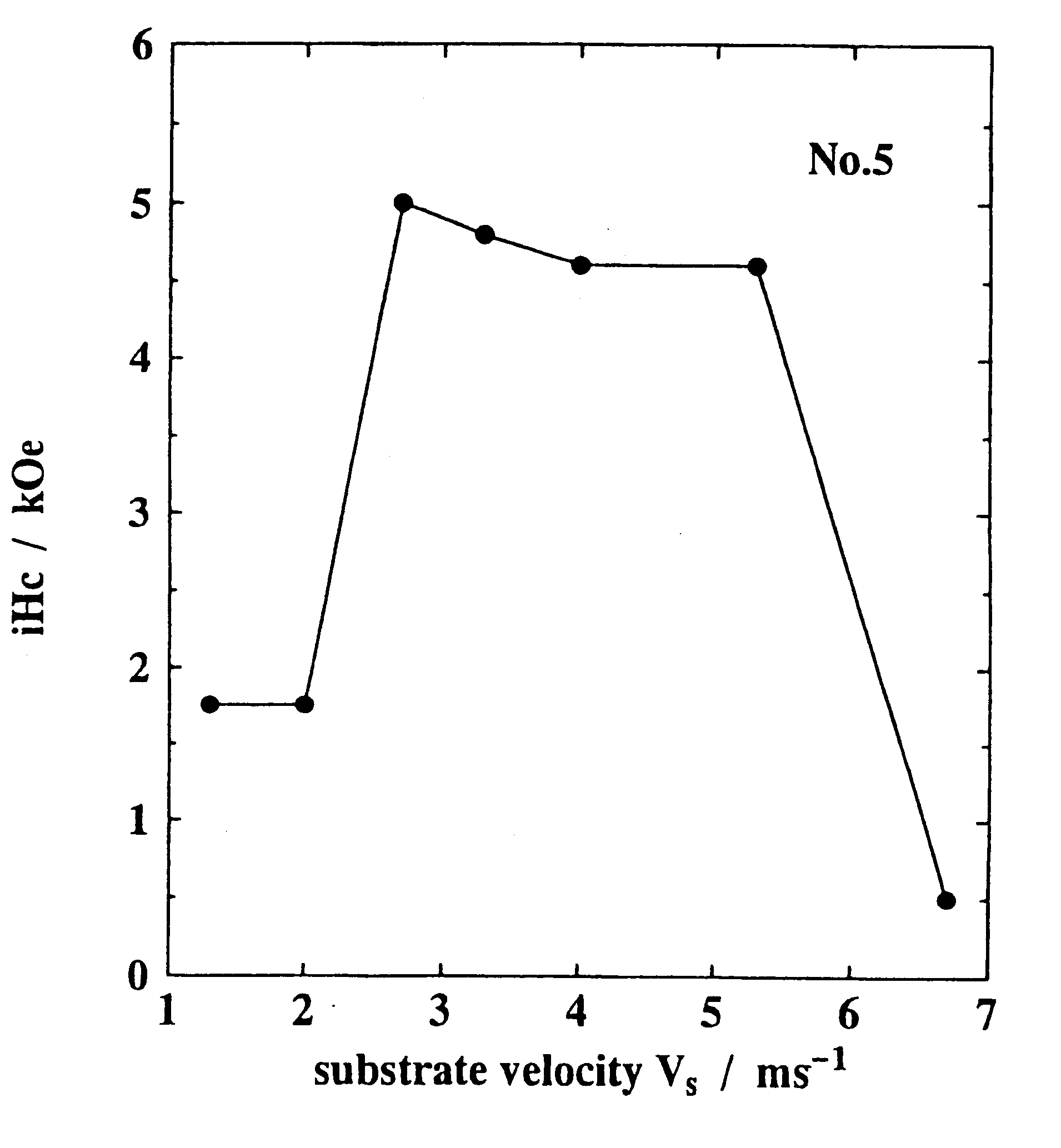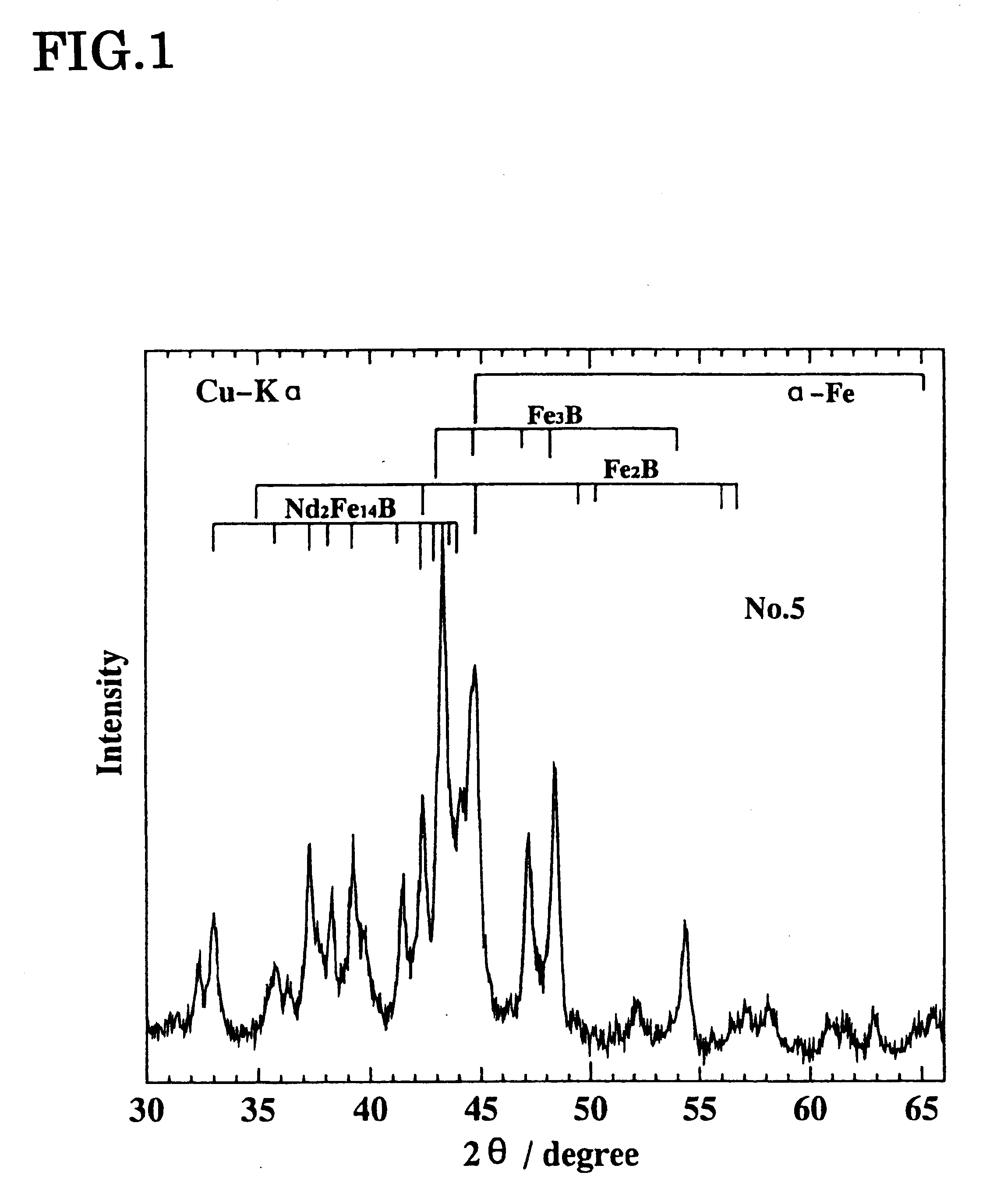Method of manufacturing thin plate magnet having microcrystalline structure
a technology of microcrystalline structure and thin plate magnet, which is applied in the direction of magnetic materials, nanomagnetism, magnetic bodies, etc., can solve the problems of narrow limit of the circumference speed range of the roller, limitations in the shape and utilization environment of the magnet, etc., and achieve the effect of smaller and thinner magnetic circuits
- Summary
- Abstract
- Description
- Claims
- Application Information
AI Technical Summary
Benefits of technology
Problems solved by technology
Method used
Image
Examples
embodiment 1
Pieces of the metals Fe, Co, C, Al, Si, Ti, V, Cr, Mn, Ni, Cu, Ga, Zr, Nb, Mo, Ag, Hf, Ta, W, Pt, Au, Pb, B, Nd, Pr, Dy, and Tb, at a purity of 99.5% or greater, were measured to obtain a total weight of 30 g. The raw material was placed in a quartz crucible having in the bottom thereof a slit measuring 0.3 mm.times.8 mm, and melted by induction heating in an Ar atmosphere maintained at the rapid solidification atmosphere pressure noted in Table 1. After bringing the melting temperature to 1300.degree. C., the molten surface was pressurized with Ar gas and, at room temperature, the melt was continuously cast from a height of 0.7 mm at the outer circumferential surface of a Cu cooling roller turning at the roller circumferential speed indicated in Table 1-2. Thus was fabricated continuous thin-plate rapidly solidified alloy at a width of 8 mm.
As indicated by the Cu--K.alpha. characteristic x-ray induced x-ray diffraction pattern for Embodiment Example No. 5 given in FIG. 1, it is ver...
embodiment 2
In No. 1, No. 3, and No. 17 in Table 1-1, the mean crystalline grain diameter was less than 10 nm, wherefore the rapid solidified alloys were heat-treated by maintaining them at 670.degree. C. for 10 minutes in Ar gas to make the mean crystalline grain diameter 10 nm or greater. The magnetic properties were determined as in the first embodiment by measurements made using a VSM on the thin-plate magnets fabricated into prescribed shapes. The measurement results are given in Table 2.
PUM
| Property | Measurement | Unit |
|---|---|---|
| mean crystalline grain diameter | aaaaa | aaaaa |
| thickness | aaaaa | aaaaa |
| grain diameter | aaaaa | aaaaa |
Abstract
Description
Claims
Application Information
 Login to View More
Login to View More - R&D
- Intellectual Property
- Life Sciences
- Materials
- Tech Scout
- Unparalleled Data Quality
- Higher Quality Content
- 60% Fewer Hallucinations
Browse by: Latest US Patents, China's latest patents, Technical Efficacy Thesaurus, Application Domain, Technology Topic, Popular Technical Reports.
© 2025 PatSnap. All rights reserved.Legal|Privacy policy|Modern Slavery Act Transparency Statement|Sitemap|About US| Contact US: help@patsnap.com



